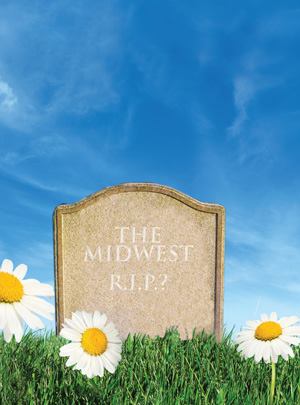“The media has said for many years that Detroit is bad; therefore, the investors have not invested in Detroit,” Holtzman says. “So over the past eight years, there has been a negative number of apartments added to the market. Even if you have very little population growth, and even if you have very little employment growth, these people still need a place to live. That’s created the highest economic and physical occupancy of all the Midwest cities. There are no concessions, and rents are increasing anywhere from 3 [percent] to 4 percent.”
Michael Barron, an associate in Marcus & Millichap’s Cleveland office, is currently marketing a 19-property portfolio of assets located in and around Detroit. He says the properties are receiving a fair amount of interest from investors, most of which are local. “There are contrarian investors and local buyers who understand that there are exceptions to the negative news,” he says. “They know they’re still able to get cash flow in these markets. They may not have the appreciation of other markets, but the cash flow should remain steady if owners off er a good product.”
In the Cleveland metro area, The K&D Group’s portfolio, which consists of 13,000 units, is 95 percent occupied, according to CEO Doug Price. “We’re probably in the best occupancy situation we’ve been in the last three to four years,” he says. “Foreclosures and the difficulty in getting a home loan have pushed more people into the rental market. We’re going to be up 3 percent for rental growth this year.”
But Price says the apartment market is also improving because Cleveland’s overall economy is getting better. He points to downtown Cleveland as proof of the regeneration: More than 11,000 people live there today, and 2,000 multifamily units are currently under construction. In 2000, only 4,300 people lived in downtown Cleveland, according to the U.S. Census Bureau. The K&D Group is now sitting on $250 million of new development in downtown Cleveland, including a mixed-use property with 236 apartments and 70,000 square feet of commercial space.
“We’ve lost jobs, but we also have a lot of other areas that are really coming on strong,” Price contends. “It’s a changing environment, and I think we’re back on the upswing again.”
ANN ARBOR Outside of Ohio, Michigan is the only state in the Midwest that receives more negative attention. Detroit and its economic woes have given the whole state a black eye, despite the fact that Ann Arbor has a thriving economy and multifamily market.
“Ann Arbor’s apartment market has had great success in staying full,” says Debbie Corson, a principal in Apartment Realty Advisors’ Ohio office. “Investors can make really good returns in these markets, which primarily consist of regional and local owners.”
So what makes this city an exception to the Michigan rule? In a word: research. Ann Arbor is home to the University of Michigan, which boasts 45,000 students and another 45,000 employees.
The city benefits from the millions of dollars that pour into the university annually to facilitate the study of everything from engineering to medicine, notes Berriz of McKinley, which owns 15 apartment communities in and around Ann Arbor, totaling roughly 10,000 units. Village Green Cos. also owns two properties in Ann Arbor, and the company is so convinced of the city’s strong future growth that it has plans to break ground on a 146-unit community in downtown Ann Arbor later this year.
INDIANAPOLIS When talking about the Midwest, it’s hard to ignore Indianapolis. “A lot of investors think Indianapolis is the hidden gem in the Midwest,” says Scott Pollom, a multifamily specialist in the Indianapolis office of brokerage firm Colliers Turley Martin Tucker.
Located just three hours from Chicago, Indianapolis has posted job growth of almost 2 percent so far this year, according to the BLS. Its professional business sectors, along with the logistics sector, continue to grow and add an element of stability to the market.
Moreover, the city’s apartment market has benefited from the slowdown in the housing sector and the credit crunch. “The biggest enemy for the apartment market in Indianapolis is the entry-level home market,” Pollom explains. “With it much harder to get mortgages, more people are renting.”
As a result, vacancies are down, rents are up, and concessions have almost evaporated. In fact, Berriz says McKinley’s Indianapolis portfolio, which consists of three properties in the northeast/Carmel submarket that total more than 800 units, is having its best year in a decade.
Philadelphia-based NWJ Properties has been buying multifamily assets in Indianapolis for three years. Today, the firm owns eight properties, totaling 500 units, throughout the city. “I don’t feel that the economic drivers in Indianapolis are any better or any worse than anywhere else, but the cap rates are better,” says CEO Nick Jekogian III, adding that he’s closing deals with cap rates at about 7.5 percent to 8 percent.
“There are still a lot of opportunities to make money in the Midwest, but you just have to be careful of which markets and submarkets you go into,” Jekogian says. “In other markets outside the Midwest, there’s more room for error and time can heal mistakes. But if you make a mistake in the Midwest, you could be paying for it for a very long time.”
Jennifer Popovec is a freelance writer living in Fort Worth, Texas.
